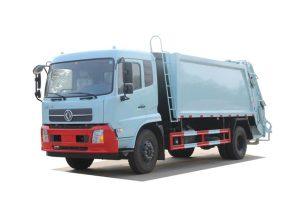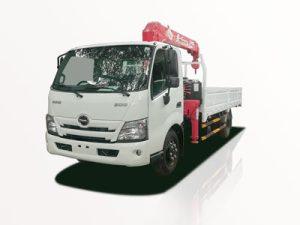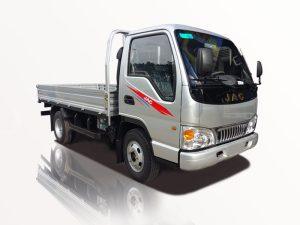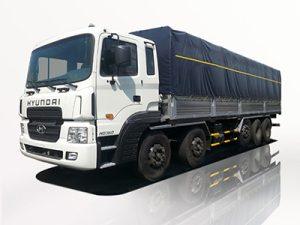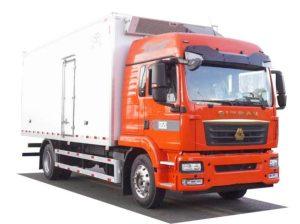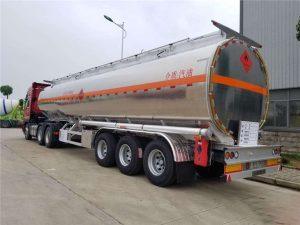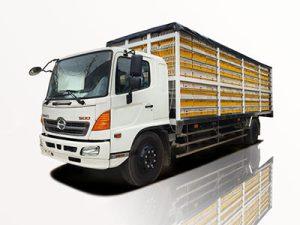Monday to Saturday - 8:00 -17:30
How Does a Concrete Truck Work: A Comprehensive Guide
Concrete trucks are crucial for transporting one of the most utilized building materials in the world. Understanding how these vehicles function can offer insights into their efficiency and safety. In this article, we will explore the intricate workings of concrete trucks, their components, and their operational procedures.
Introduction to Concrete Trucks
Concrete trucks, also known as cement mixers, are specialized vehicles designed to carry and mix concrete for construction purposes. The primary function of a concrete truck is to ensure that concrete remains in a workable state while being transported to the job site. This article delves deep into the mechanics, features, and operational procedures of concrete trucks, providing you with a clearer understanding of their role in the construction industry.
Types of Concrete Trucks
1. Drum Mixers
Drum mixers are the most common types of concrete trucks. They have a large rotating drum that mixes the concrete ingredients as the truck moves. The continuous motion of the drum keeps the concrete from setting prematurely.
2. Volumetric Mixers
Unlike drum mixers, volumetric mixers allow for on-site mixing of concrete. These trucks store the raw materials separately and mix them as needed. This flexibility makes volumetric mixers ideal for projects requiring varying concrete amounts.
3. Transit Mixers
Transit mixers come with a stationary body for loading dry materials and a rotating drum for mixing during transport. They typically mix the concrete ingredients on the way to the construction site, ensuring freshness upon arrival.
Key Components of a Concrete Truck
1. Mixing Drum
The mixing drum is the central component of a concrete truck, where the raw materials are combined and mixed. Its shape is designed to facilitate efficient mixing and prevent material segregation.
2. Chassis and Engine
The chassis provides the framework for the truck and supports all other components. The engine powers the truck and can vary in size and horsepower depending on the truck’s weight and capacity.
3. Auger
Some trucks feature an auger system for discharging concrete. An auger is a screw-like device that helps move the concrete from the drum to the pouring location smoothly.
4. Water Tank
A water tank is essential for maintaining the concrete’s moisture level during transit. It allows the operator to add water to the mix as needed to achieve the desired consistency.
Operational Procedures of Concrete Trucks
1. Loading Process
The loading process begins at a concrete plant, where the driver loads ingredients such as cement, sand, gravel, and water into the mixing drum. The concrete is usually mixed at a specific ratio to ensure optimal strength and durability.
2. Mixing Process
Once loaded, the concrete truck’s drum begins to rotate, mixing the ingredients thoroughly. For transit mixers, the mixing continues throughout transportation to keep the concrete fresh.
3. Transportation
During transportation, the truck must maintain a consistent speed and gentle movements to prevent segregation of the concrete mixture. The driver is trained to navigate safely, especially on construction sites.
4. Discharge Process
Upon arrival at the job site, the driver prepares to discharge the concrete. If equipped with an auger, it is engaged to deliver the concrete precisely where needed. Proper discharge techniques are critical to avoid waste and ensure accurate pouring.
5. Cleaning and Maintenance
After the job is completed, proper cleaning is vital to prevent concrete from hardening in the drum. This cleaning routine often involves rotating the drum with water and cleaning agents to remove residue effectively.
Understanding Concrete Mixtures
The Ingredients of Concrete
Concrete is a composite material made up of several components:
- Cement: The core binding element in the mixture.
- Aggregates: Sand and gravel provide bulk.
- Water: Activates the cement and aids in mixing.
- Additives: Enhance specific properties of the concrete.
Concrete Ratio Examples
| Type of Concrete | Cement | Sand | Gravel | Water |
|---|---|---|---|---|
| Standard Mix | 1 part | 1 part | 2 parts | 0.5 parts |
| High Strength Mix | 1 part | 1 part | 1.5 parts | 0.4 parts |
Regulations and Safety Measures
1. Safety Standards
Concrete trucks must comply with safety regulations set by organizations such as OSHA (Occupational Safety and Health Administration) to ensure safe operation. Operators must undergo training to handle machinery correctly.
2. Load Limits
Every concrete truck has a specific load limit that should never be exceeded. Overloading can lead to accidents and equipment failure, posing significant safety risks on construction sites.
3. Driver Training
Concrete truck drivers require specialized training to operate these vehicles safely. Training covers aspects like loading techniques, traffic regulations, and the unique challenges posed by the construction environment.
Real-World Applications of Concrete Trucks
1. Construction Sites
Concrete trucks are primarily seen at construction sites, pouring foundations, slabs, and other structures. Their ability to transport large volumes of concrete efficiently makes them indispensable for timely project completion.
2. Infrastructure Development
From highways to bridges, concrete trucks play a pivotal role in infrastructure projects. The demand for rapid transportation of concrete is crucial to meet deadlines for public safety projects.
3. Residential Projects
In residential construction, concrete trucks provide an essential service for pouring driveways, patios, and other concrete elements. The ability to mix on-site or during transit allows for customization of concrete properties based on client needs.
Tips for Working with Concrete Trucks
1. Plan Ahead
Before scheduling a concrete truck, plan the pouring location and ensure it is accessible. Ensure that the site can accommodate the truck’s size and movement.
2. Optimize Timing
Concrete begins to set quickly; thus, timing is essential. Work closely with your concrete supplier to estimate the ideal delivery time and communicate your needs clearly.
3. Ensure a Smooth Surface
Preparing a smooth and stable surface where the concrete will be poured helps achieve better results. Clean the site of debris to avoid mixing issues.
Frequently Asked Questions (FAQ)
1. How long can concrete sit in a truck before it sets?
Concrete can typically remain in a mixing truck for about 1-2 hours before it starts to set, depending on the temperature and specific mixture used.
2. Can concrete trucks mix the concrete on-site?
Yes, volumetric mixers can mix concrete on-site, allowing for adjustments to be made as needed before pouring.
3. What is the maximum capacity of a concrete truck?
Most concrete trucks typically carry between 8 to 12 cubic yards of concrete, though some can hold larger quantities depending on their design.
4. How do concrete trucks avoid spillage during transportation?
Concrete trucks are designed with sealed drums that prevent spillage during transport. Additionally, smooth driving and secure loading help minimize the risk of leaks.
5. What happens if the concrete starts to set in the truck?
If concrete begins to set in the truck, it can cause blockages in the discharge system and damage the mixing drum. This can lead to additional costs and the need for cleaning or repair.
6. Are there any additives that can extend the working time of concrete?
Yes, there are several chemical retarders that can be added to concrete mixes to extend the working time, allowing for longer periods of mixing and transportation.


